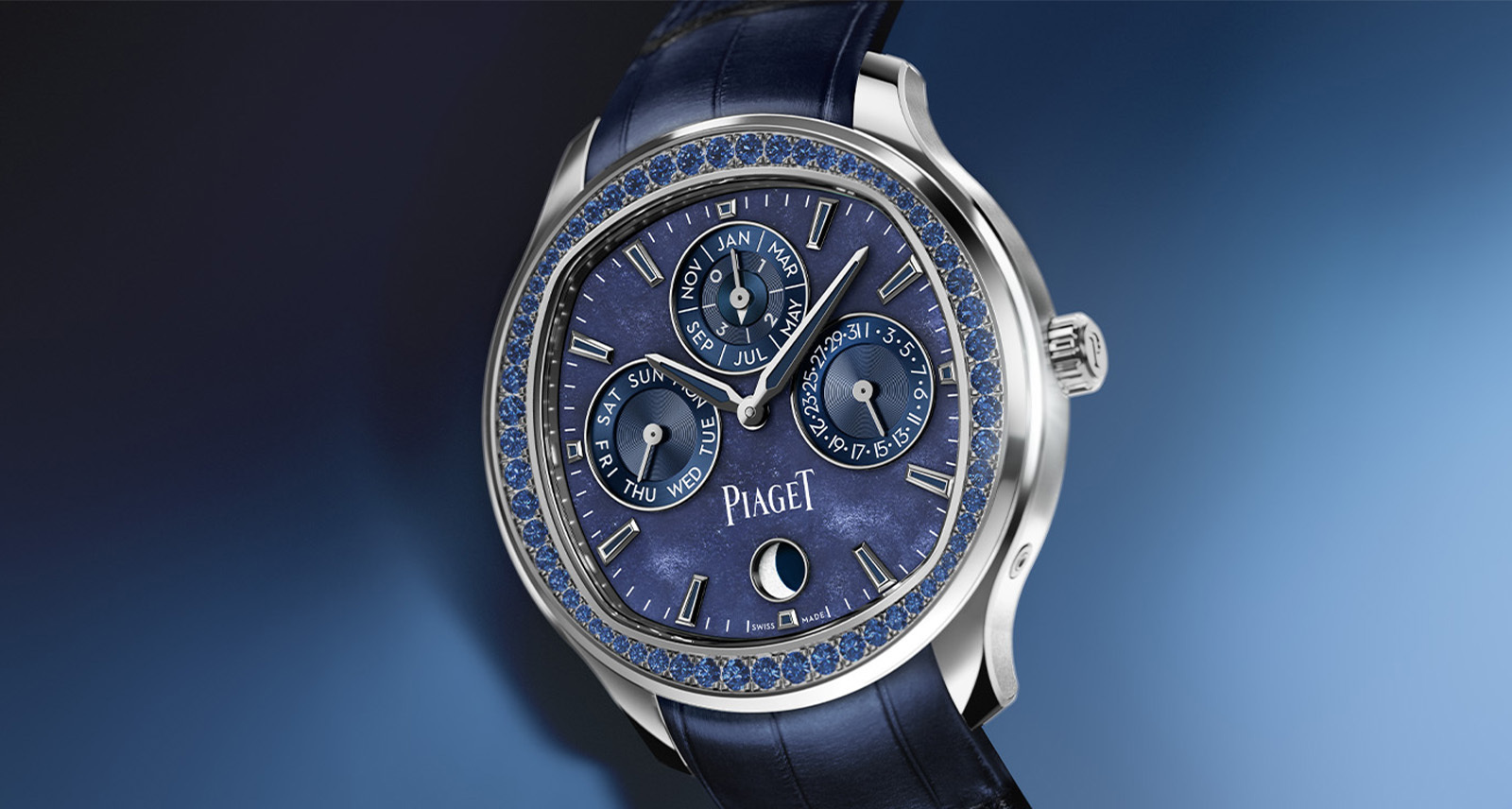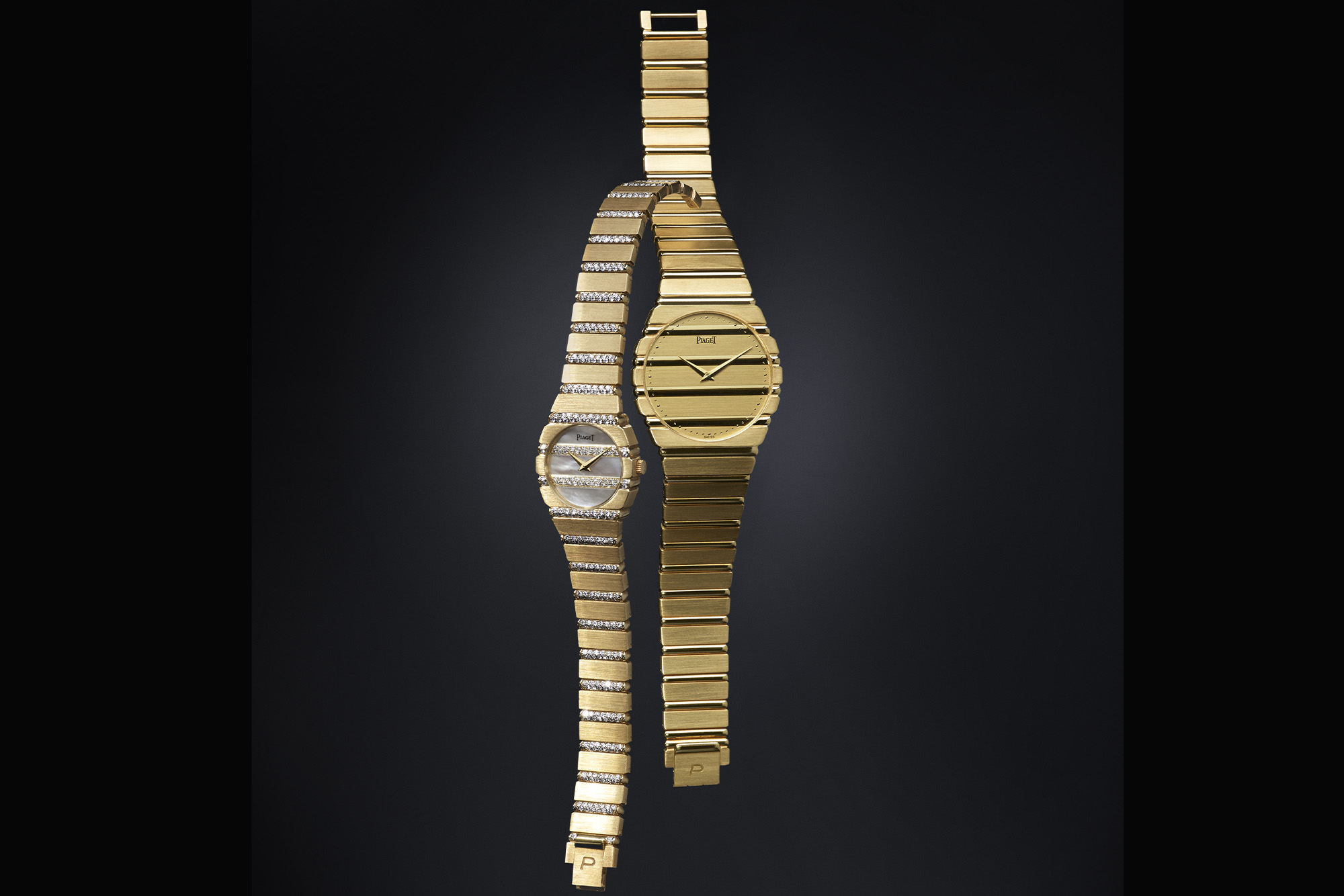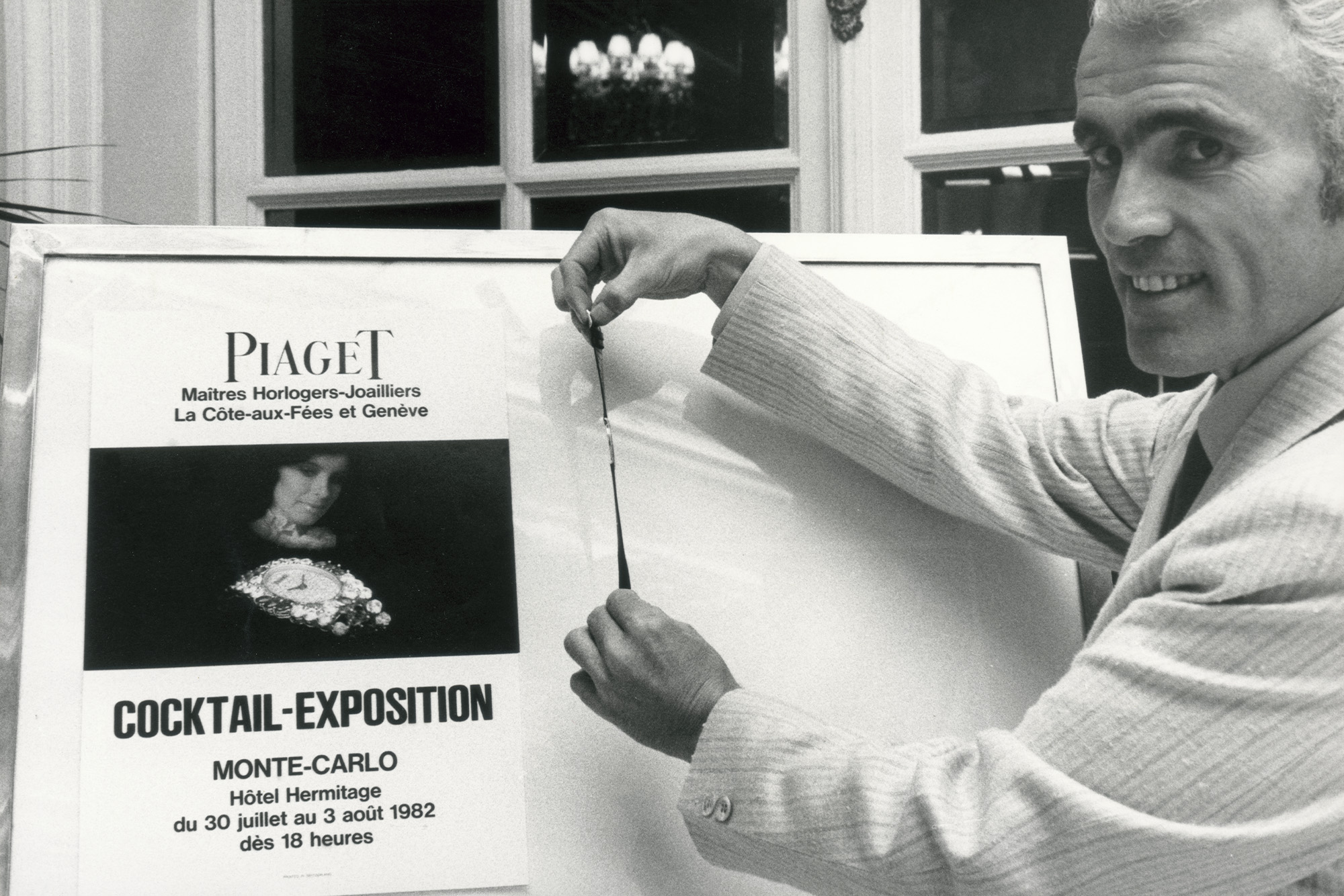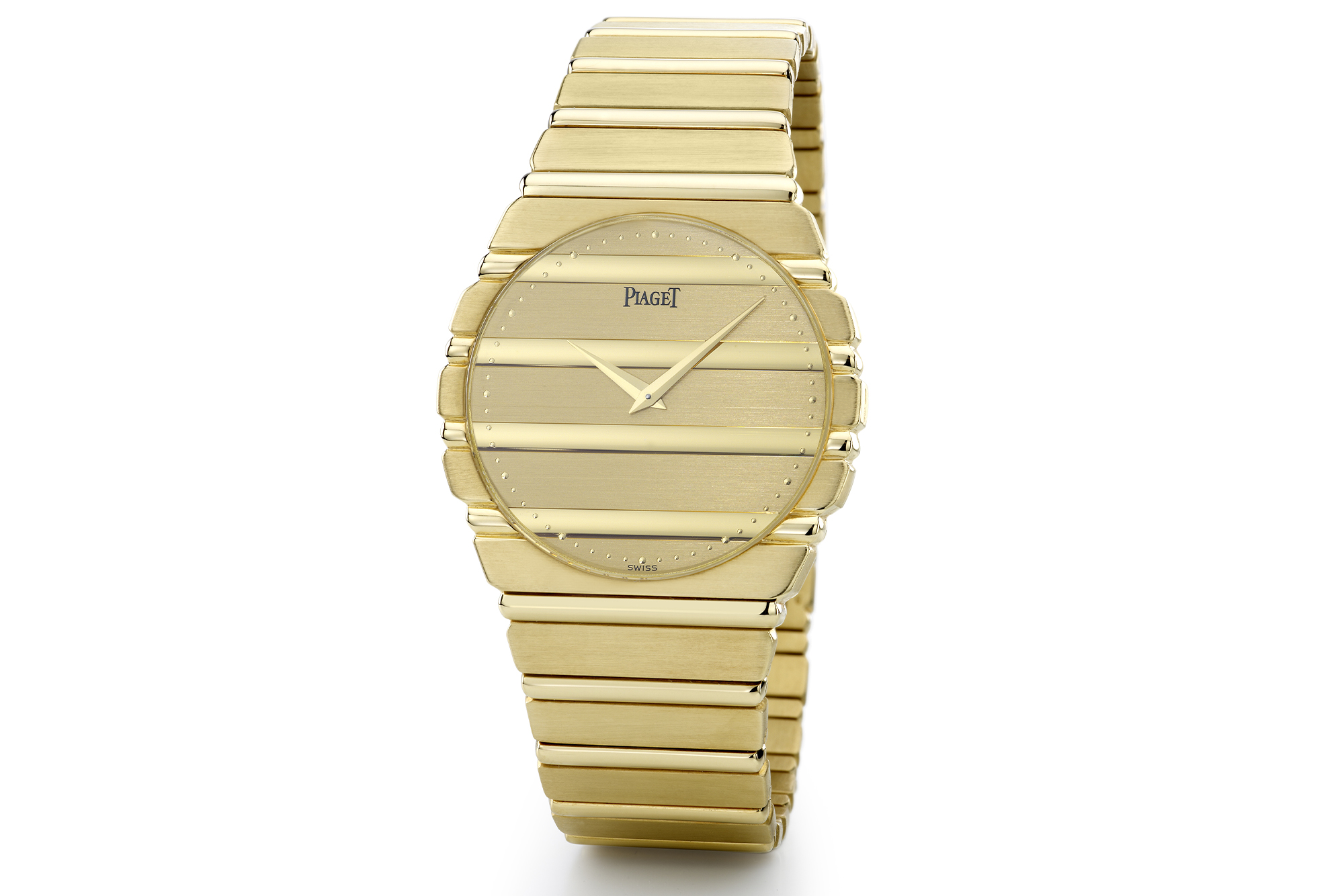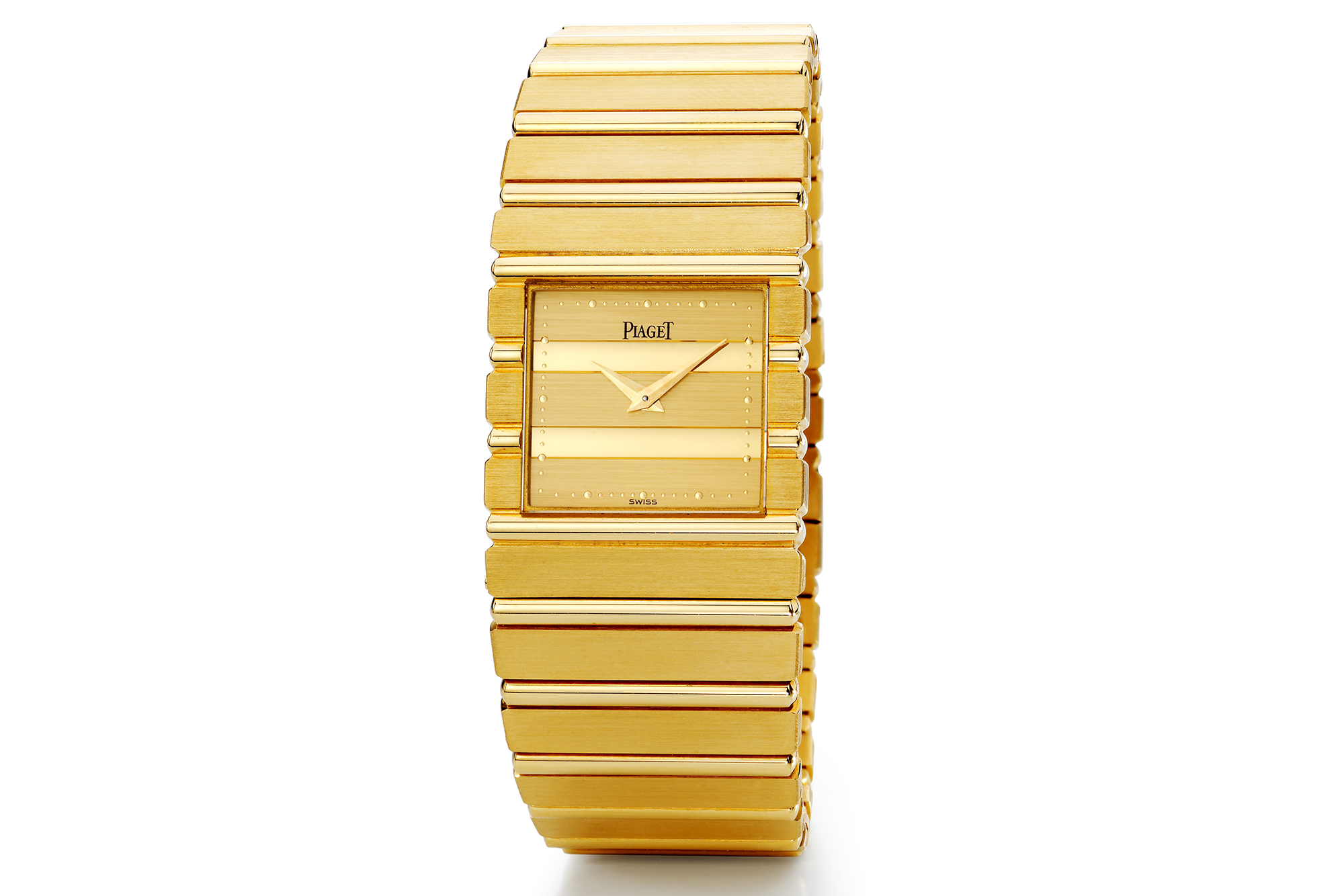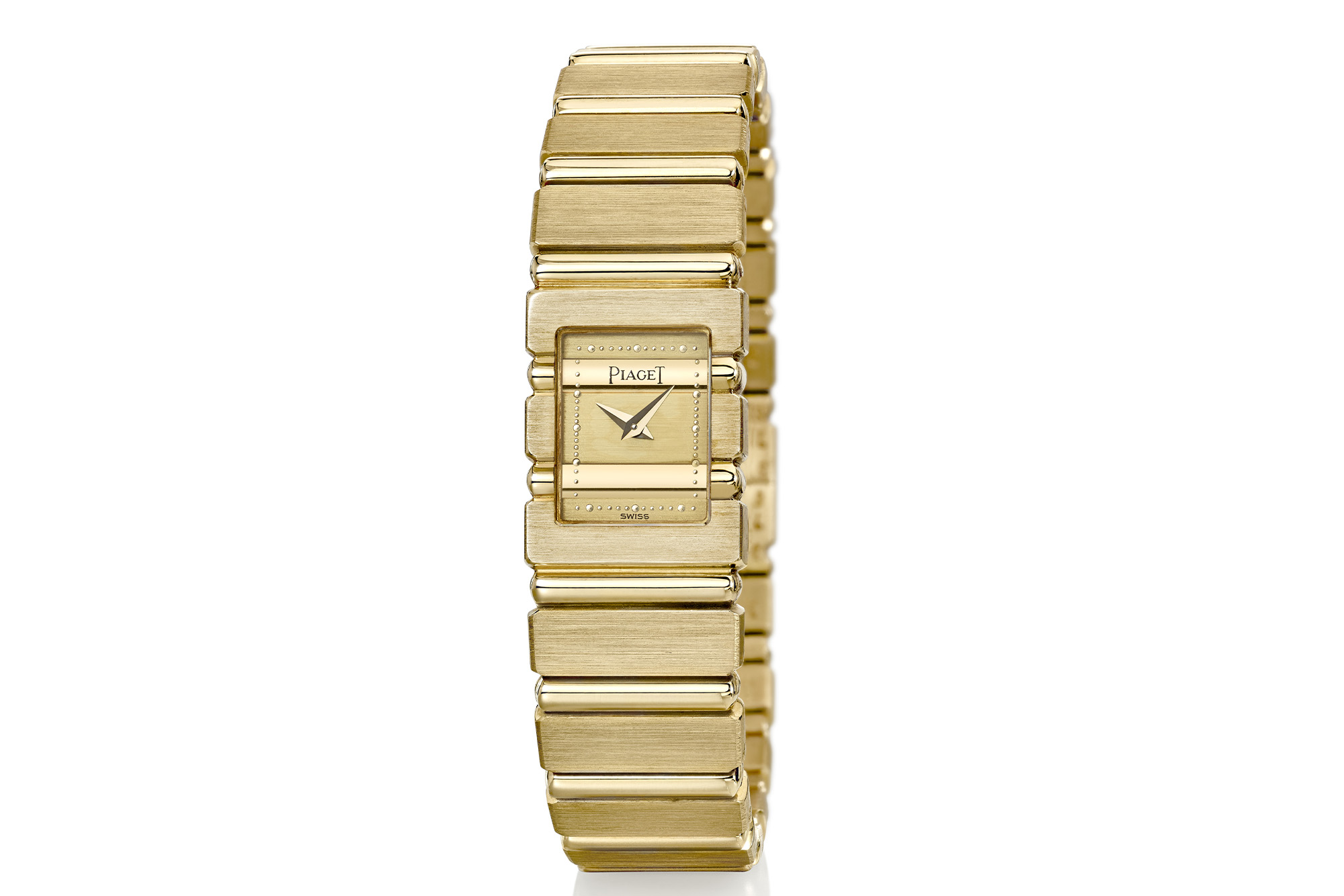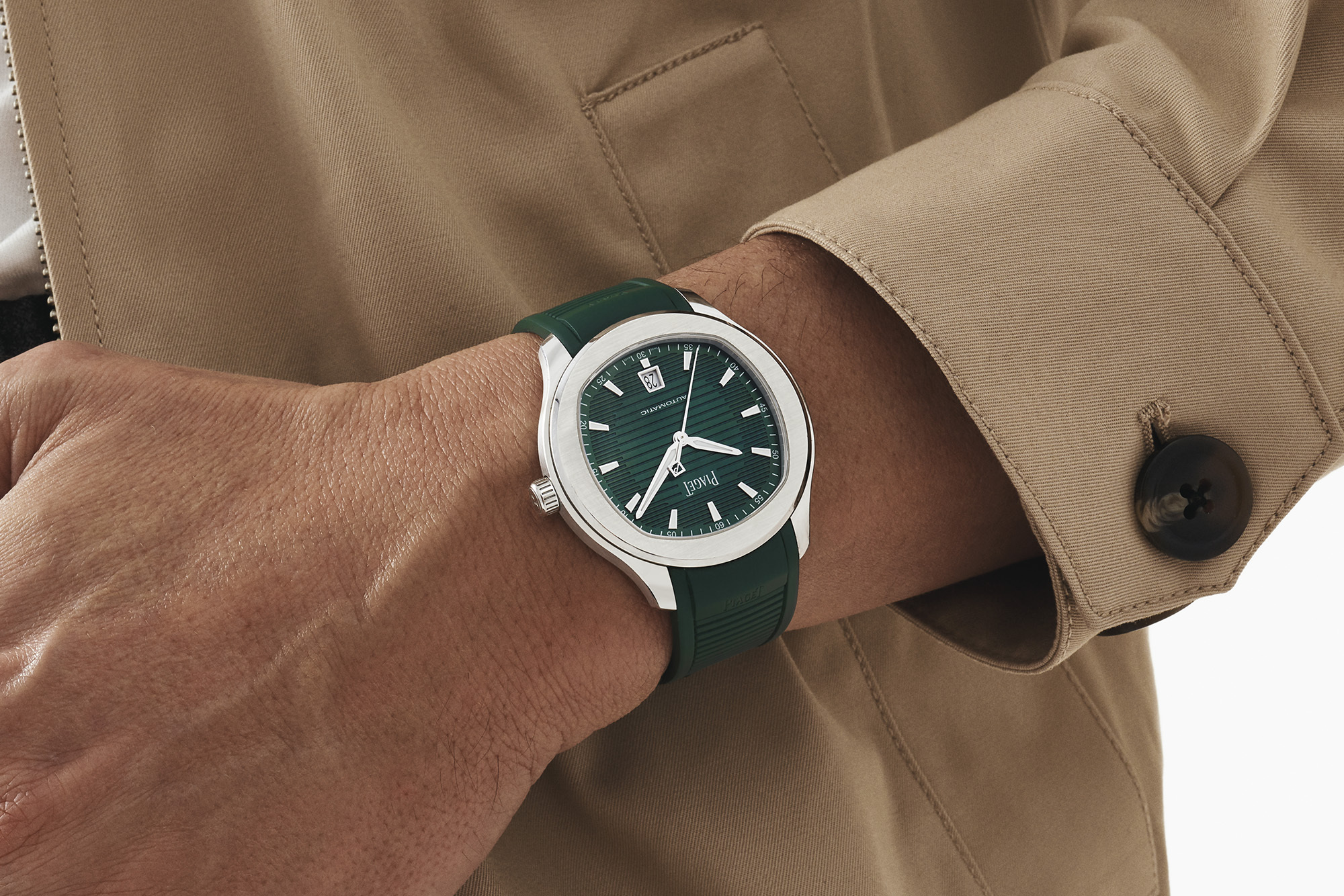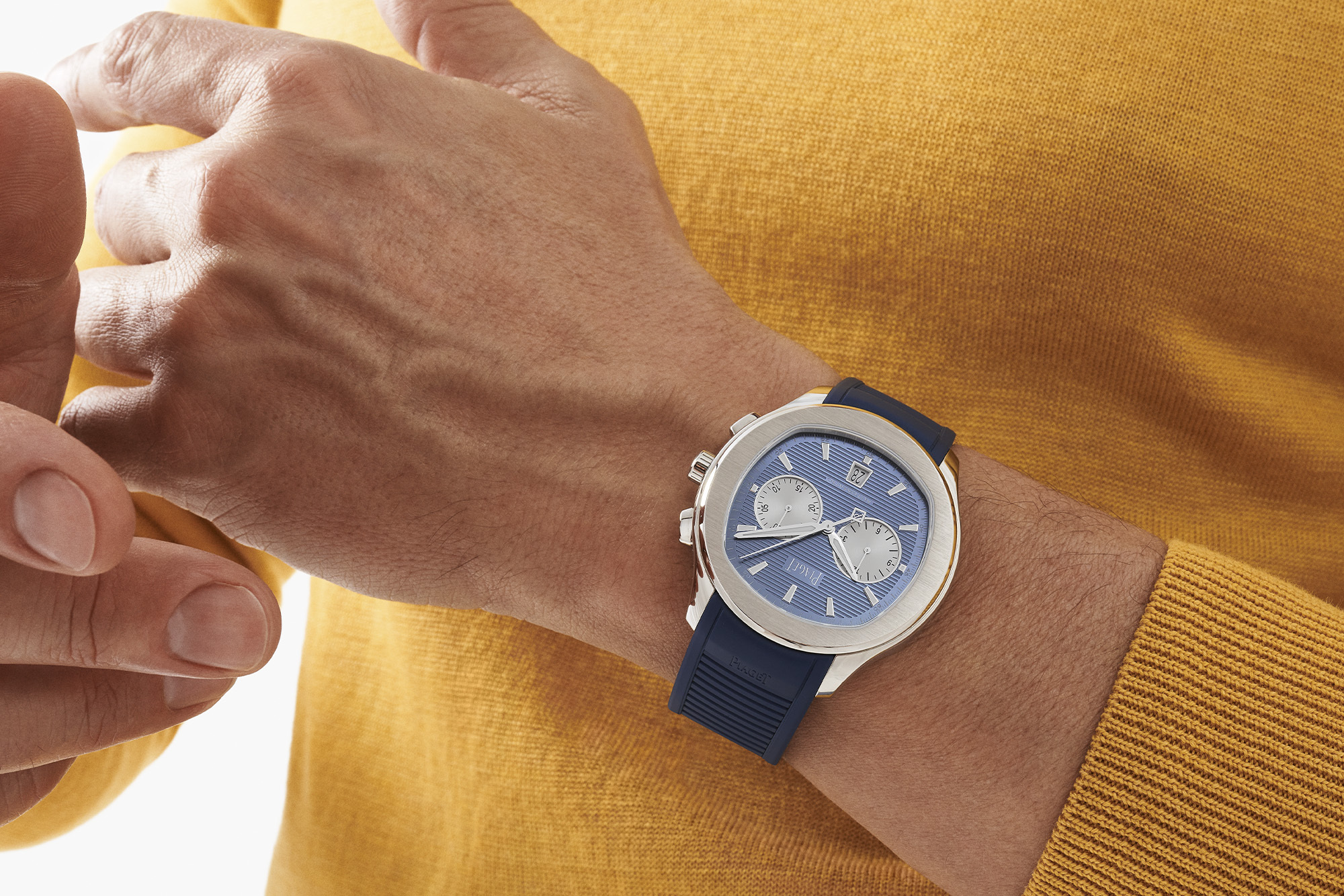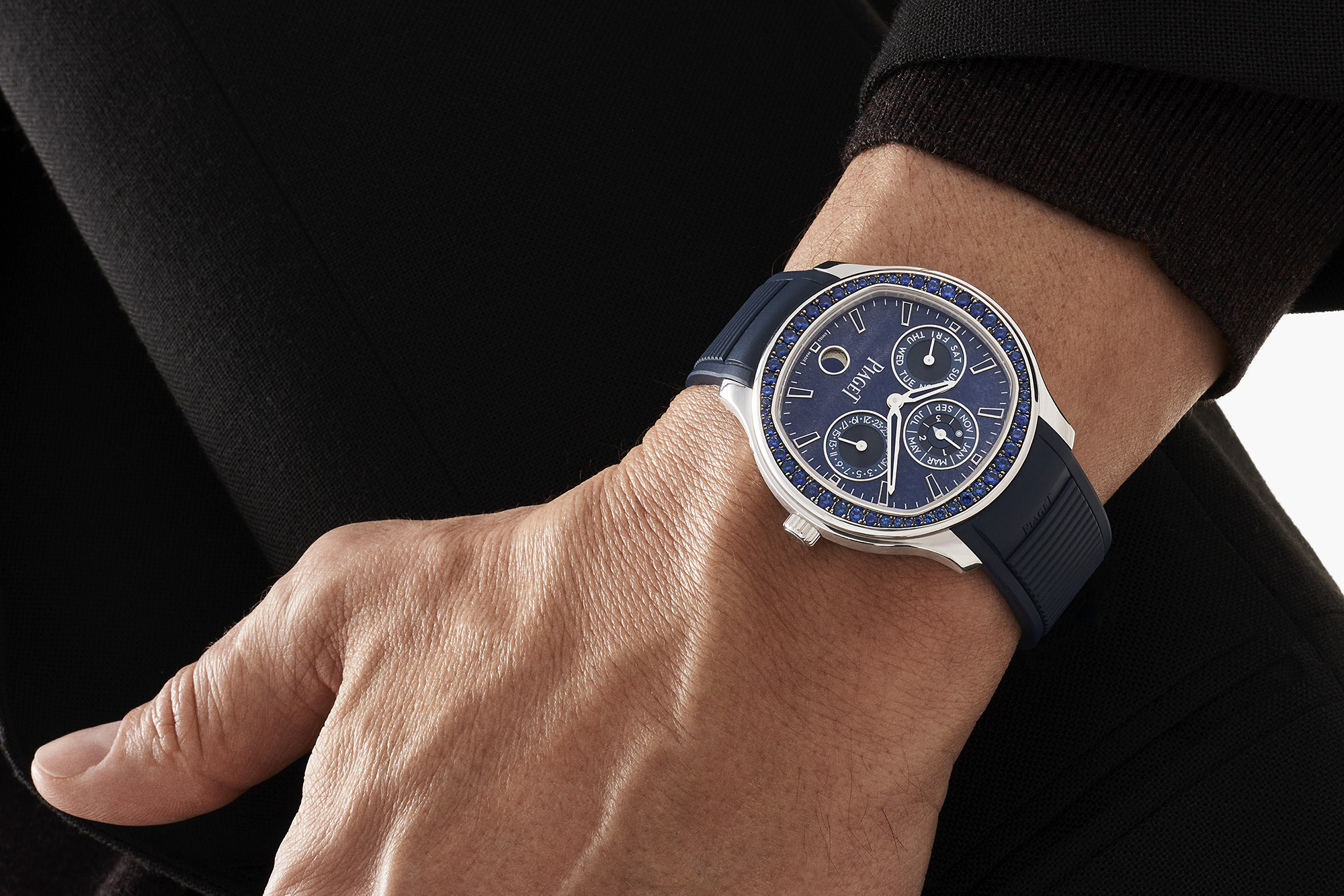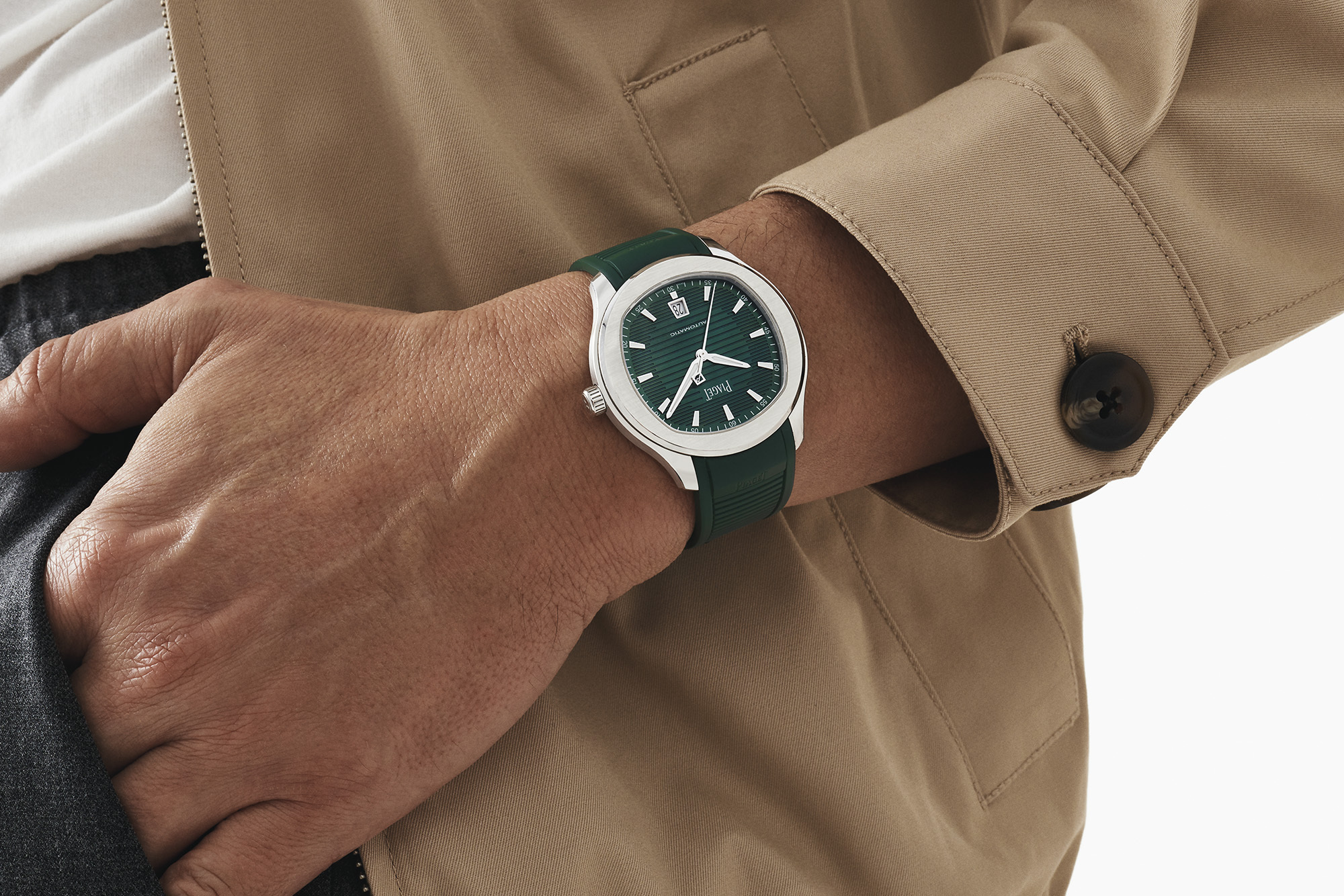The Past, Present, and Future of the Piaget Polo
SHARP & Piaget
These last few years in the watch industry, the talk of new sports watches is incessant. Business casual energy, and the blending of sartorial fashion and relaxed luxury has led to a significant push for watches designed to go from day to night, or from the office to the great outdoors. Of course, many brands attempt to lay claim as originators in the space, but when it comes to Piaget, and specifically the Piaget Polo, the originality and influence it brought forth doesn’t always get the attention it deserves.
Not only does the Polo have a rich history of its own, it first arrived in the market very much in a class of its own. The Polo didn’t step in to follow industry trends, but rather it arrived to the beat of its own drum. After a bit of a hiatus, the modern Polo has returned in similar fashion, with eyes on how to further carve its own path. Before we get to where that path leads, we need to glance back at where it all started, in 1979.
Piaget Polo History
By the time the Polo stepped into the light, the first few well-known integrated-bracelet sports watches had already come to be. The demand for something more sporting was clear, but tools and utility were never part of the design ethos of Yves Piaget. Instead, and rightfully given the brand’s dedication to high jewelry, the first Polo was not to be some austere steel structure. Instead, what was presented in 1979 was a piece of high craftsmanship linked with the idea of the occasional sporting venture.
Part of its creation is tied to the crux of a major shift in watchmaking at the time. Piaget was part of the small group that helped develop the first Swiss quartz watch movement — the Beta 21. While its partners were busy wedging this newly developed caliber into chunky sports watches, Piaget took umbrage. After all, Piaget was then (and still is) known for its mastery of ultra-thin watchmaking, and it wasn’t long before they moved to build their own quartz movement. The Piaget 7P took hold of the title of the world’s thinnest quartz movement at the time, at a mere 3.1mm thick. The 7P provided the perfect base for a first sports watch — slender enough to keep case thickness in mind, and robust enough to endure the trials of an active lifestyle.
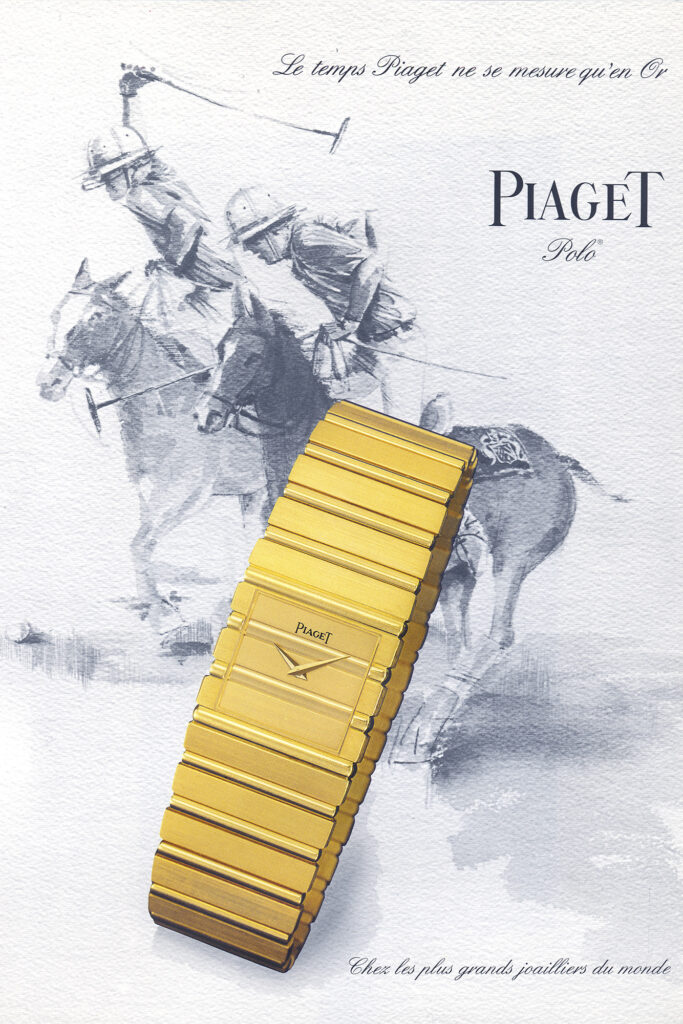
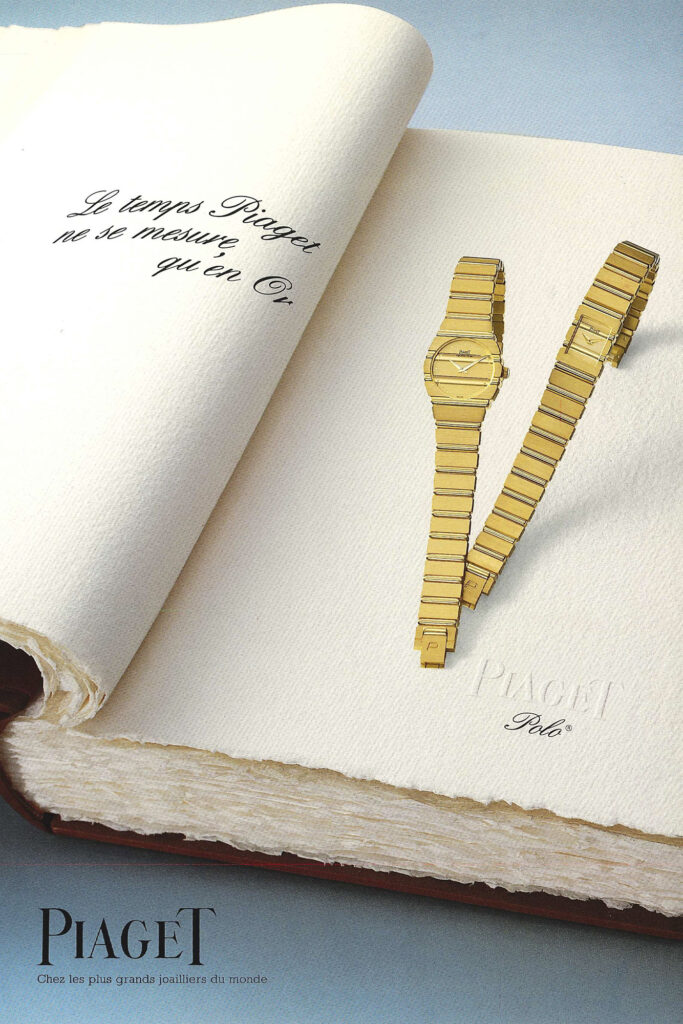

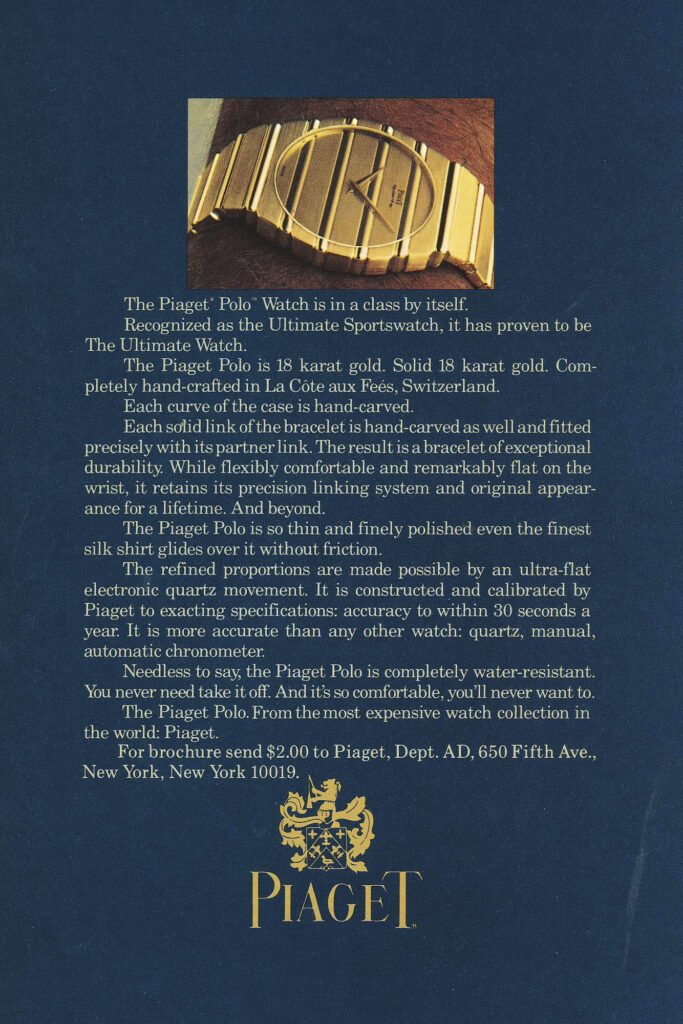
Offered in both a round and a square configuration, the first Polo boasted a rich 18k yellow gold construction with a solid block-and-bar gadroon bracelet design that carries through the case and even the dial of the watch. Each individual bracelet link was carved from a gold block, rather than being cast into shape — the more common practice both then and now. As for its name, Polo was a natural fit, as the sport’s athleticism and precision aligns perfectly with the ethos of Piaget.

As the decades moved onward, the Polo continued to evolve with the market. After a hiatus from 1988 to 2001, the Polo grew in dimensions, and began adopting newly created in-house manufacture calibers including an ultra-thin chronograph and perpetual calendar. That said, 2016 marked a major turning point — a comprehensive evolution of the Polo with present-day collectors in mind.
The New Piaget Polo
Launched in the summer of 2016, the new Piaget Polo arrived to much fanfare, marking the beginning of a new era. The newest reference still carries the core hallmarks of its siblings; its overall case shape, the use of horizontal ribbing on its dial, and its overall sport/casual aesthetic are front and centre. That said, much has changed. Its case size has come down from the large 45mm of the prior iteration, down to a smaller yet still impactful 42mm.
Perhaps the most noteworthy change, and one you wouldn’t necessarily clock without a deeper dive, is that “S” in its nomenclature. The Polo is the first collection of timepieces from the brand to ever be made in steel. From 1979 to 2016, obviously times have changed, and the customer demand for steel watches is miles above and beyond what it was those many decades ago, and positioning the new watch as the brand’s steel cased “entry level” offering opened doors to a broad clientele who’ve long been wanting something different from the typical steel sports watches that were already in market.
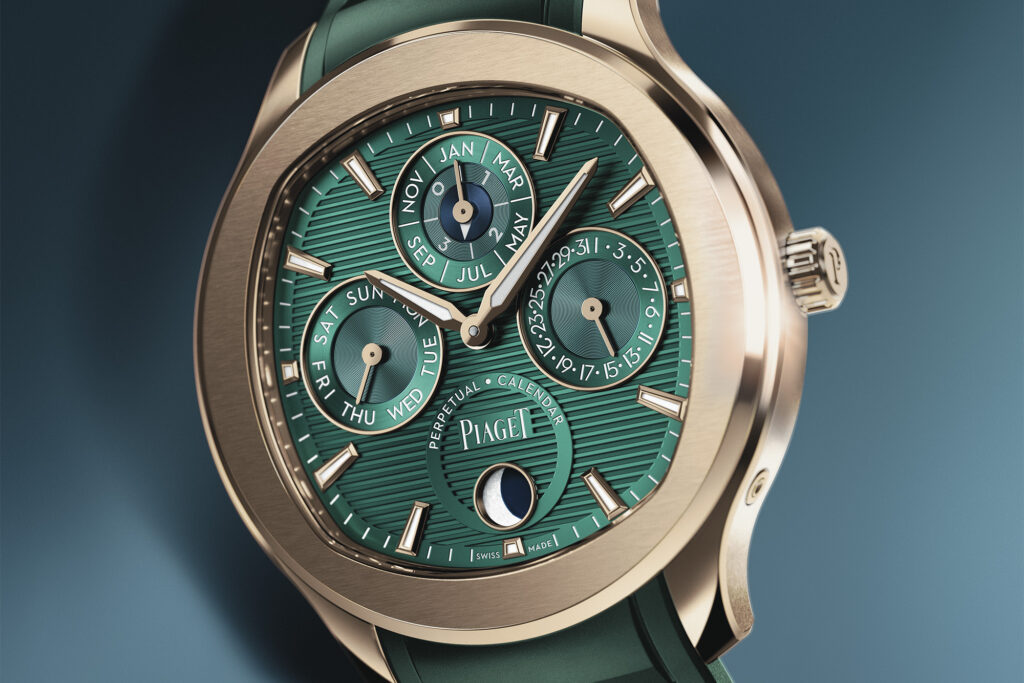
Starting things off with two complications — a time and date, and a chronograph — Piaget has continued to build on the Polo line over the last seven years. A skeletonized reference was developed to help further showcase the brand’s engineering and finishing capabilities, and just this past year an Ultra-Thin Perpetual Calendar was added to the offering. This latest model was an immediate hit, and one of the more talked about references released at Watches & Wonders 2023. Being designed with a slender profile in mind, as one expects from a brand known for its mastery of ultra-thin watchmaking, the Perpetual Calendar is only 8.65mm thick, making it the second thinnest reference in the Polo lineup (next to the Skeleton at 6.5mm).
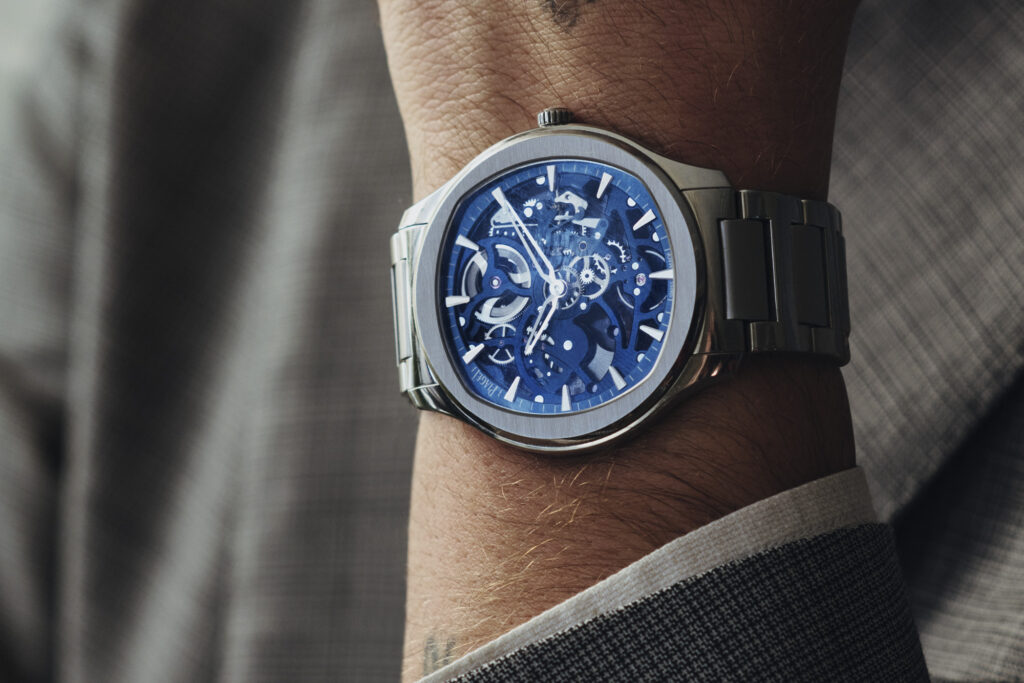
So What Comes Next?
With such a strong response in the market thus far, this is indeed the million dollar question. The last few years in the watch world has revealed an ever-growing desire for watches that aren’t driven by hype. Collectors are weary of the wild secondary market values of brands like Patek and Audemars Piguet, and the thirst for quality watches from brands with true legacy is palpable. Of course, like most brands Piaget is not prone to communicating on unreleased products. Given the significant successes of Polo thus far, we can certainly expect to see more additions to the Polo line in the years to come. Will there be new complications? New materials? Only time will tell.
